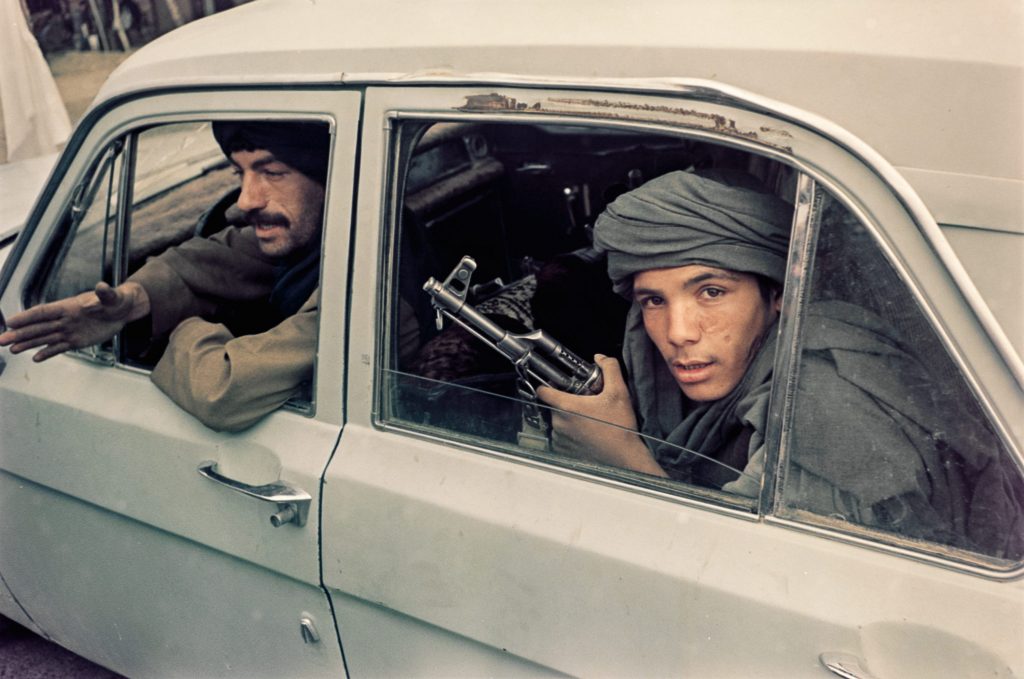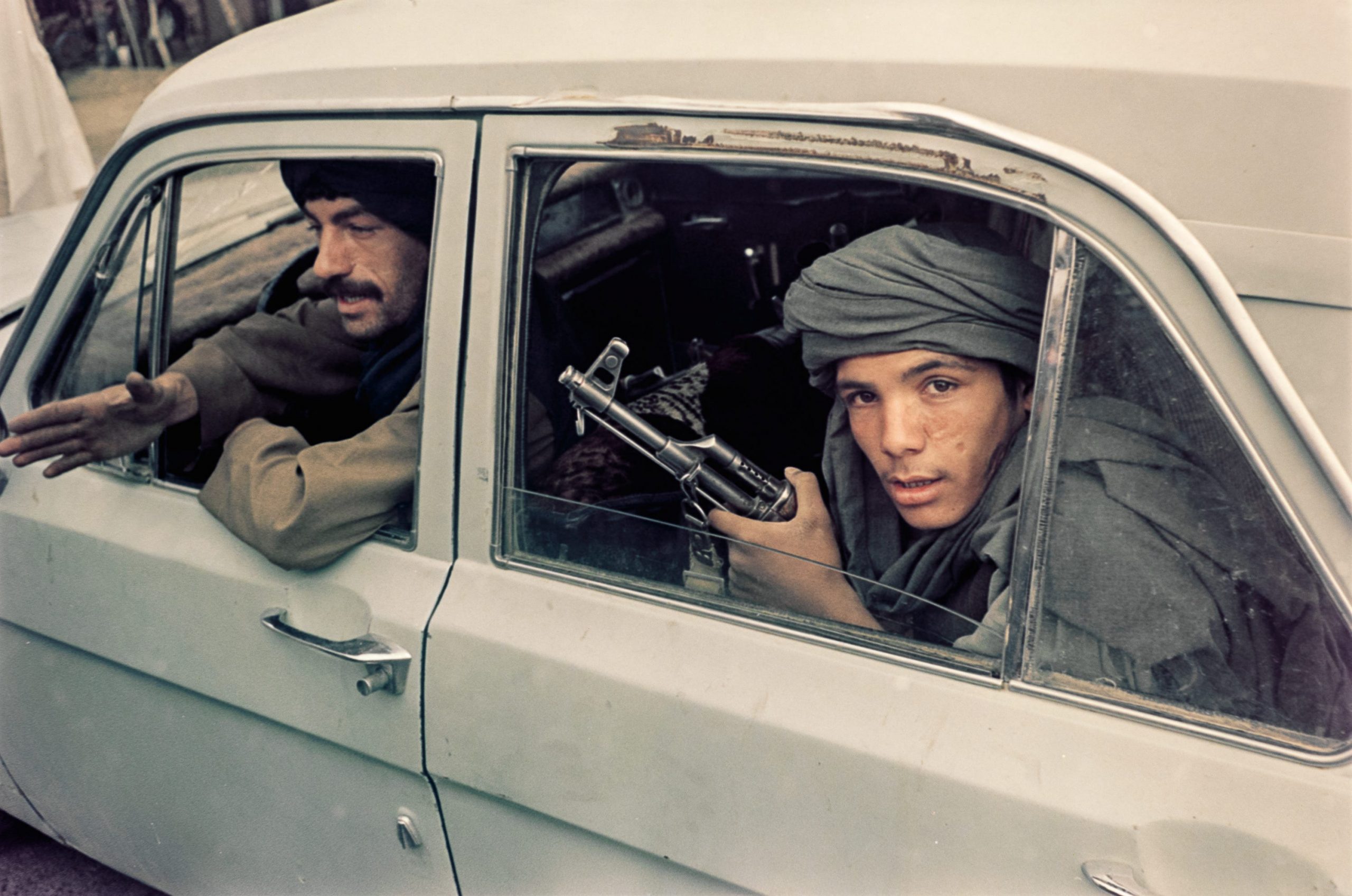
Alan Chin
- In the fall of 1996, photographer Alan Chin documented the early days of Taliban rule in Afghanistan.
- Now that the Taliban has returned to power, Chin revisits the trip – 25 years later – and the images he captured.
- See more stories on Insider's business page.
In the autumn of 1996, I received an assignment from The New York Times to go to Afghanistan to cover how a little-known (in the West, anyway) fundamentalist group called the Taliban had taken Kabul, the Afghan capital.
This week – 25 years later – I watched from afar as the Taliban again claimed victory. I've been reflecting on the fact that this isn't the first time the Taliban has seized Kabul, nor the first time the United States has left behind its allies in Afghanistan. Then, like now, the Taliban conquered most of the country with almost no resistance, as most of the armies arrayed against it slowly defected, retreated, surrendered, or simply disappeared.
Back then, Afghanistan had been consumed by a vicious civil war since 1989, when the Soviet Union withdrew its forces and the United States cut off aid to the anti-Soviet mujahideen. Out of that vacuum, the Taliban formed, and it promised to end the corruption that was endemic to the warlords fracturing the country.
I knew little of that at the time. I was a young photographer cutting my teeth in postwar Bosnia. Over 48 hours, I flew from Zagreb, Croatia, to London to Peshawar, Pakistan, where I was told to expect a call from the International Committee of the Red Cross, which was still making flights in and out of Kabul. I didn't want to miss my chance at a seat on one of those plane. So in that pre-cellphone era, I stayed in my hotel room binge-watching Bollywood videos on satellite TV until the phone rang.
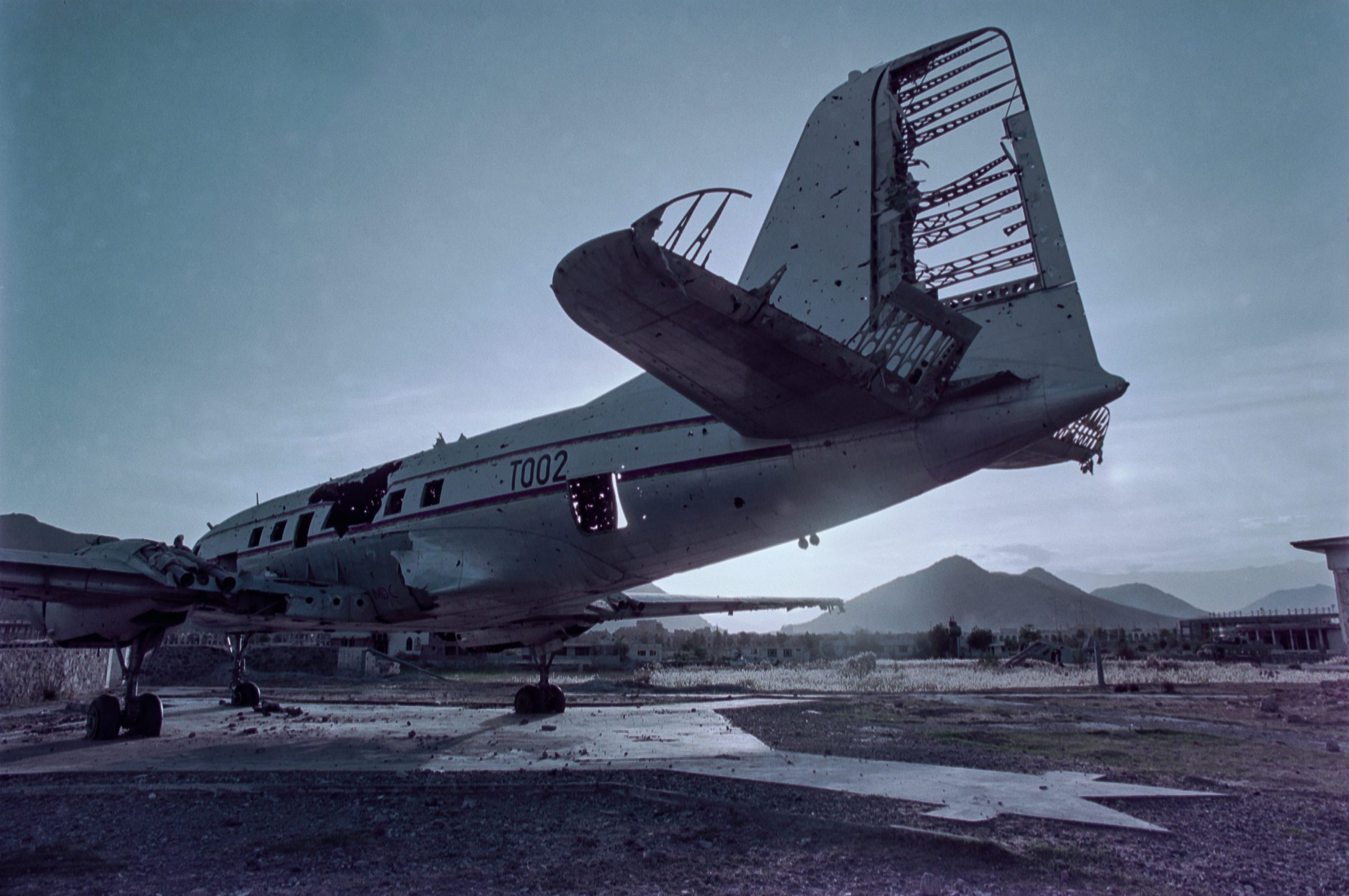
Alan Chin
When the time came, we set off in a small twin-engine propeller plane, with perhaps 12 passengers. The South African pilots warned us that they hadn't been able to establish reliable communications with Kabul, so we would fly high until we were directly above the airport, and then rapidly descend in a corkscrew pattern to land. This approach, they said, would reduce the danger from anybody shooting at the airplane.
The Kabul airport was a grim testament to decades of war. Wrecked helicopters, airplanes, military radar units, and anti-aircraft guns were on their sides, all riddled with bullet holes. An Ariana Airlines jetliner was parked on the tarmac, but when I looked closely, I saw that pieces of it had been blown off by a rocket attack. The terminal building was without electricity, and it was almost surprising to have my passport stamped in the near darkness.
A tank with a white flag sticking out from its radio antenna was parked in the airport's entrance. That's where the abyss of miscomprehension started for me. I assumed that the flag symbolized the tank crew's surrender to the Taliban. But the white flag was, and still is, a Taliban banner. It symbolizes the group's claim to purity of purpose.
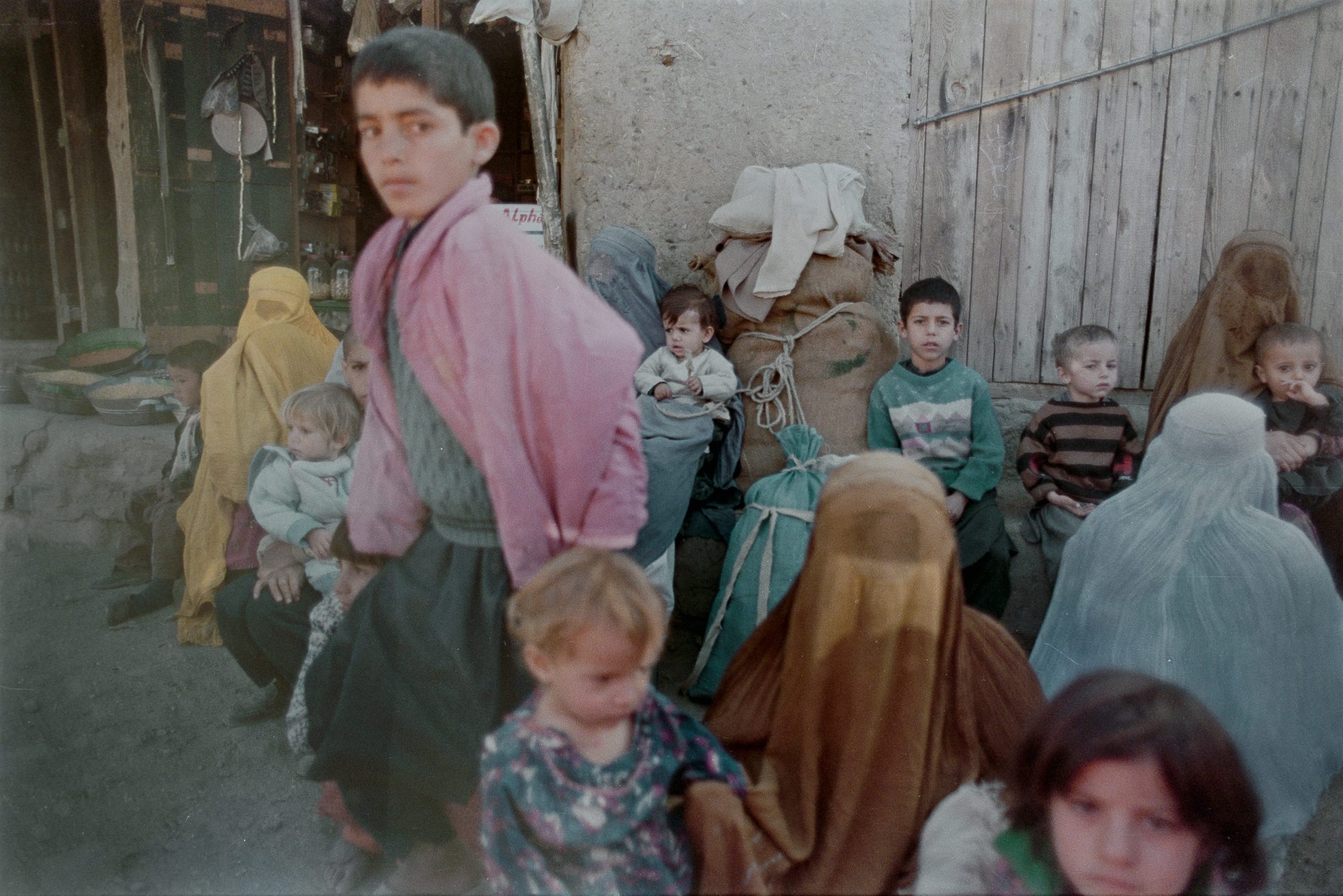
Alan Chin
Kabul in 1996 was a city with entire square blocks of shattered buildings, reminiscent of photographs of bombed cities from World War II, of Grozny in Chechnya - much worse than Sarajevo, Bosnia-Herzegovina, where I was coming from. The destruction had occurred not from battle involving the Taliban or the Soviets, but between rival mujahideen factions that had shelled the city ruthlessly upon falling out with one another.
Some stores and markets were open, but there wasn't much to buy. There were few women on the streets, and those few were covered head to toe in burqas.
When I went to the Foreign Ministry to register as a journalist, Taliban soldiers wandered through the halls and offices, seemingly in awe of their own spectacular achievement. Many were bedecked with flowers, a discordant sight next to their automatic weapons.
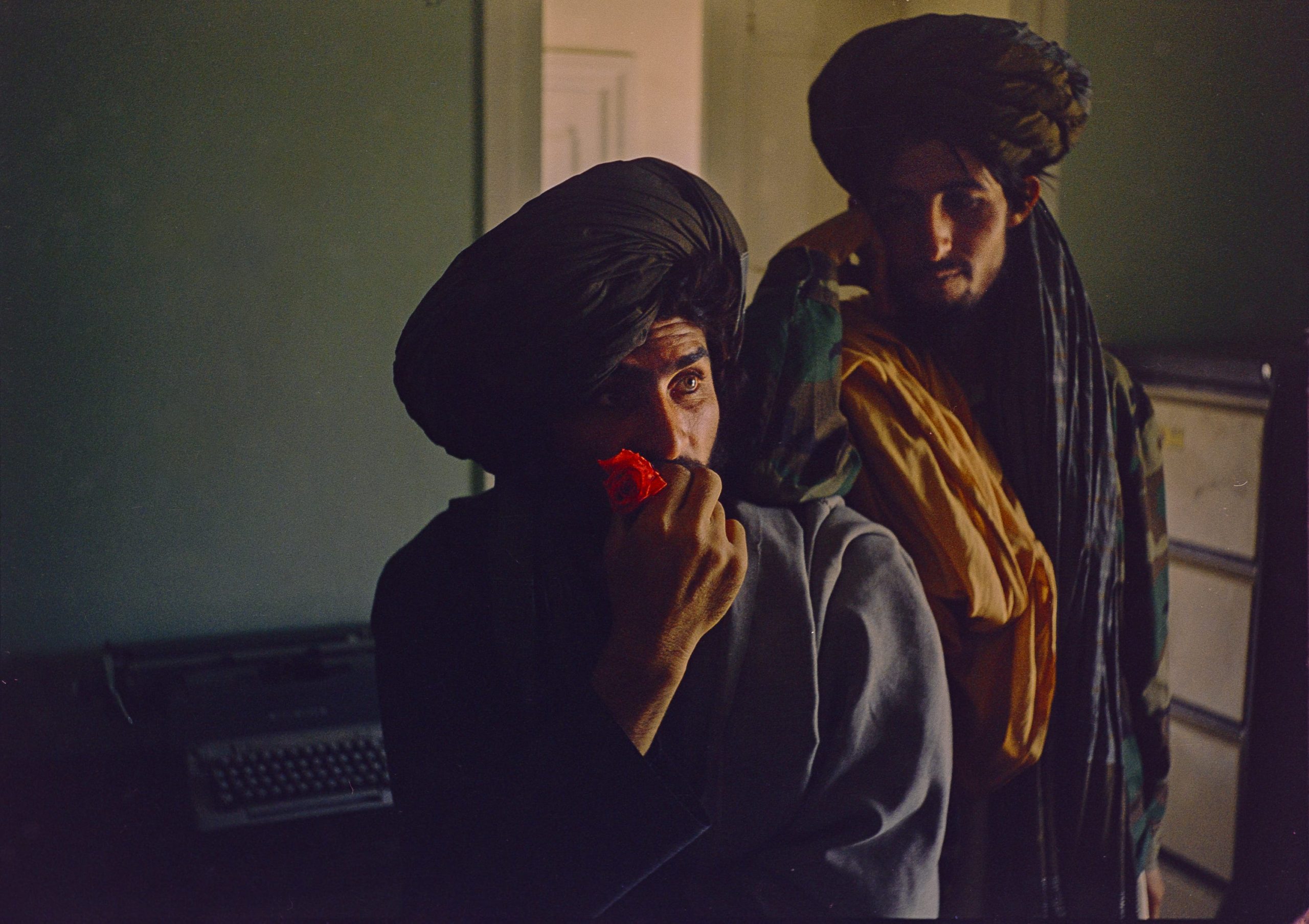
Alan Chin
As part of its strict interpretation of Islam and Sharia, the Taliban destroyed televisions, musical recordings, and depictions of women it considered immodest - all "graven images." At roadside checkpoints, I saw unspooled cassette tapes waving in the breeze like confetti. At the movie theater, armed Taliban soldiers threw hundreds of reels of film into a pile and started a bonfire. At a police station they had occupied, a small mountain of smashed TV sets filled the backyard.
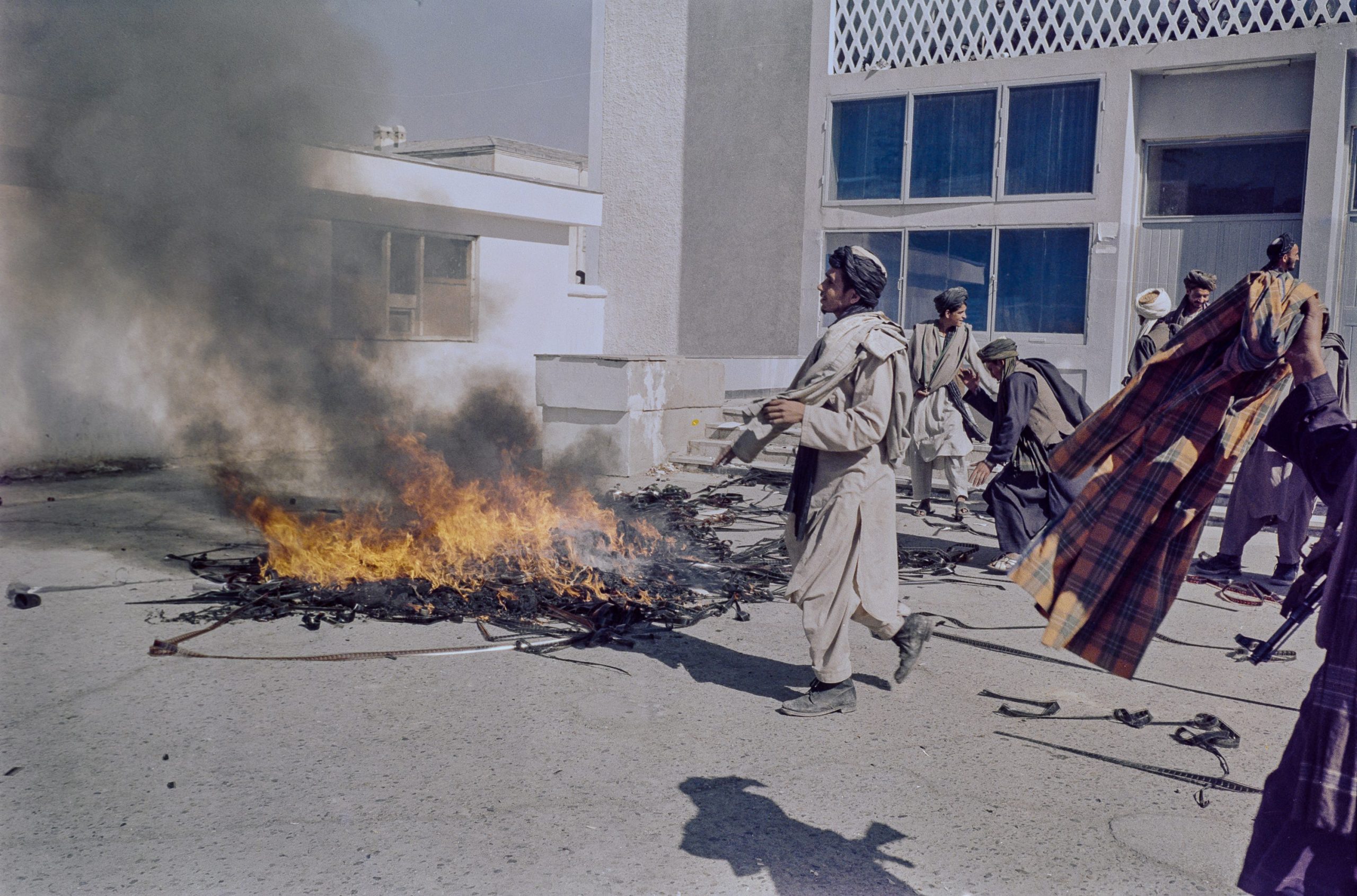
Alan Chin
I found a Taliban officer who spoke English, as many of them did because they grew up in refugee camps in Pakistan.
"I understand that your beliefs are against television and such influences," I said. (I'm transcribing this from memory.) "But have you ever watched TV yourself?"
"Of course," he replied. "I've watched a lot of TV in Pakistan."
"Oh, really? What did you think of it? Did you like it?"
"Yes. I especially enjoyed seeing the big fish in the big oceans." (Nature documentaries were perhaps an unsurprising choice for someone coming from a landlocked country. Later, bootleg copies of the movie Titanic were so popular that paintings of the ship adorned the walls of teahouses and the sides of trucks.)
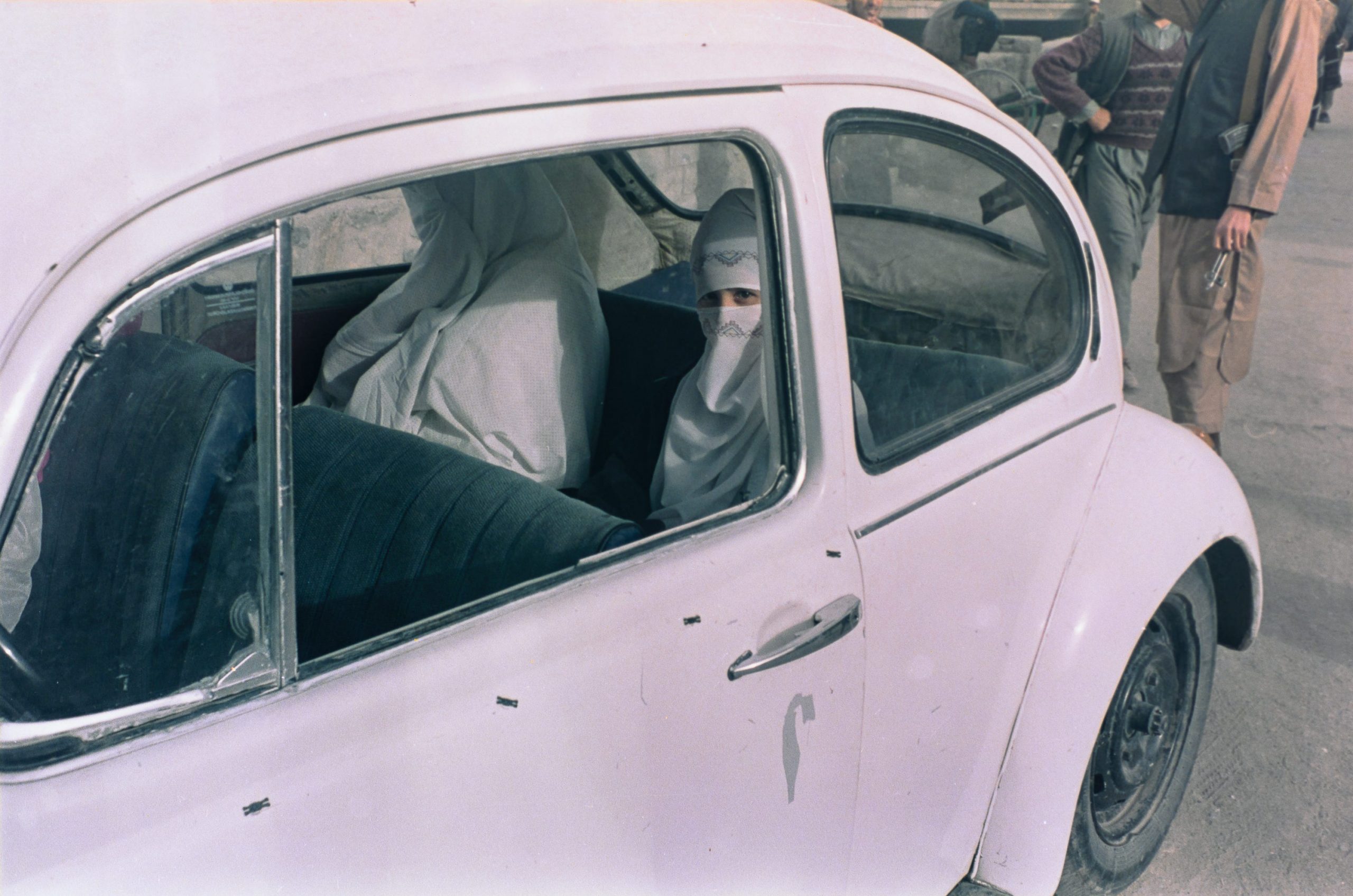
Alan Chin
"But you're destroying TVs here?" I asked.
"We are destroying TVs because they aren't good for Afghans and Afghanistan," he said. "It's fine for you, but not for us."
He spoke with the patient tone of an adult trying to explain a basic fact to a child. He didn't seem to have any anger or sense that I was, as gently as I could, possibly provoking him.
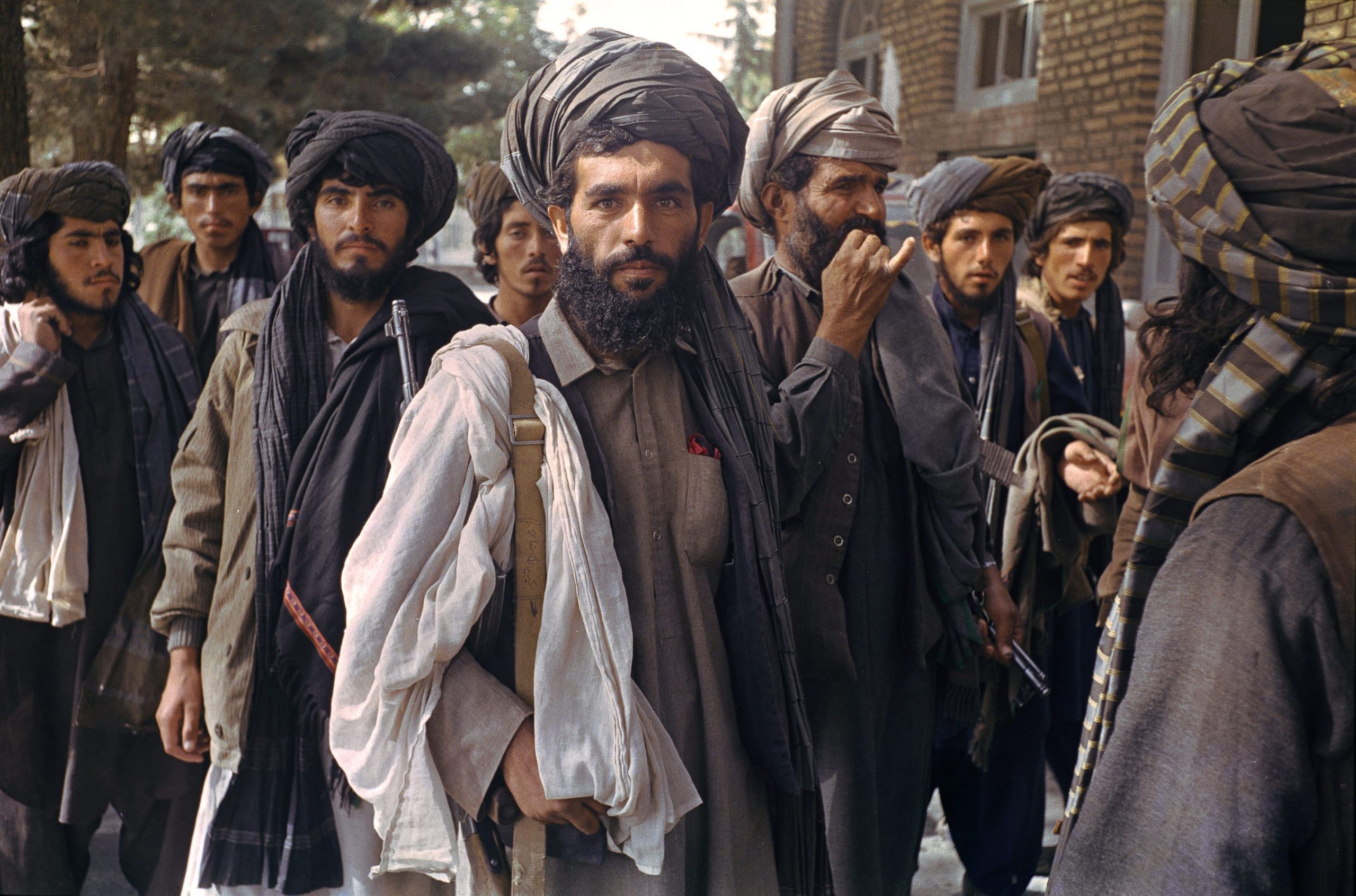
Alan Chin
Over the next few weeks, I traveled around the country with John Burns, a New York Times reporter who would go on to win a Pulitzer Prize for his work in those months. We shared a car and the assistance of an Afghan journalist with two other Western reporters.
Ruined armored vehicles littered the sides of the pitted roads - some rusted and overgrown with vegetation; others more recently abandoned or destroyed. The towns mostly had electricity only from generators.
As civilians, we could cross the front lines, so long as we didn't make a show of it. Ahmed Shah Massoud, the ethnic Tajik commander famous for his efforts against the Soviets, had retreated to his home area of the Panjshir Valley, which he defended effectively against the still-advancing Taliban. The entrance to the valley is only several score miles north of Kabul, and on several nights, the flashes of artillery fire could be faintly seen in the distance.
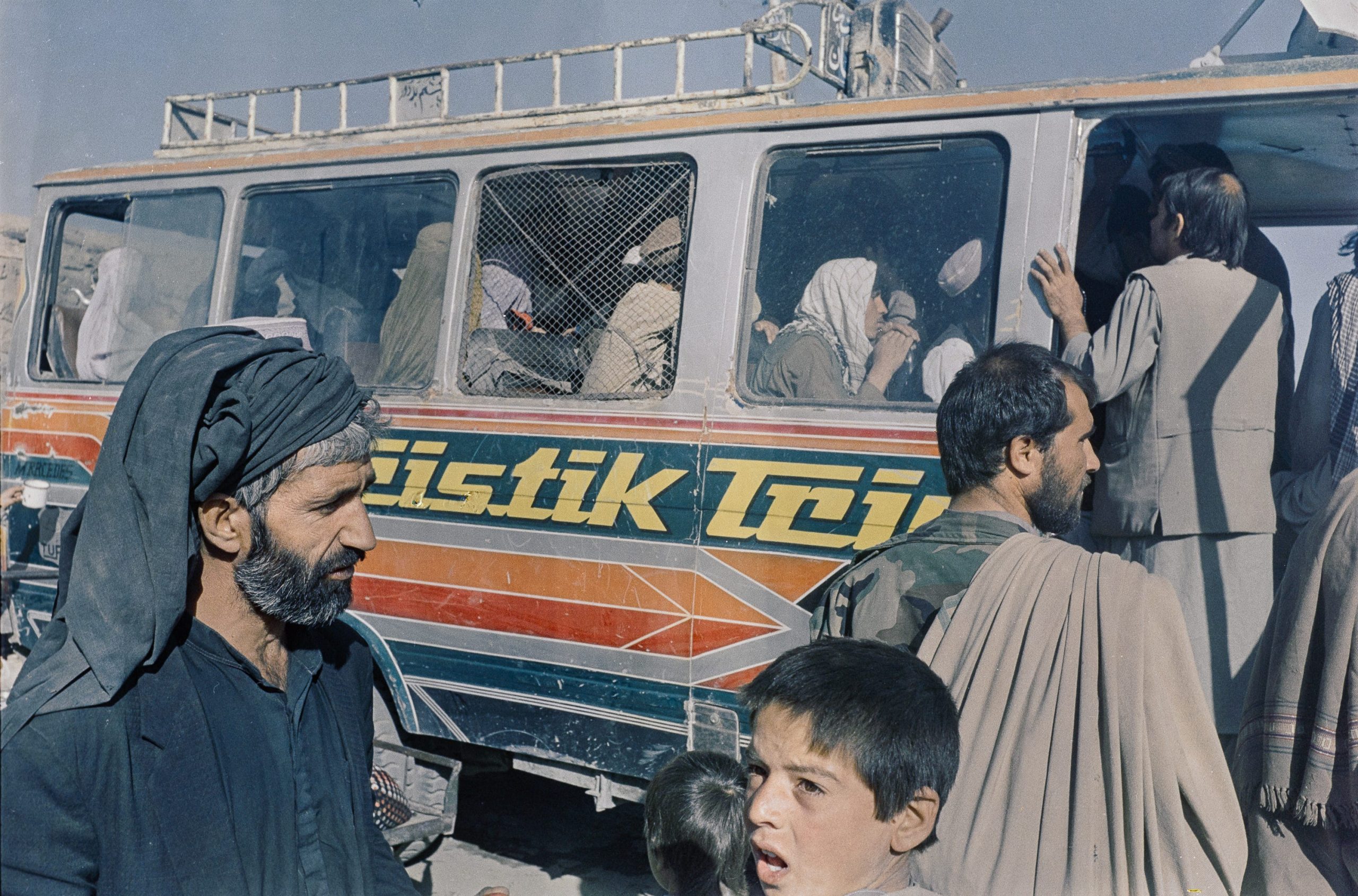
Alan Chin
At a position of Taliban soldiers firing rockets at their opponents, I found a Taliban officer methodically cleaning his pistol, the parts of which were laid out on a piece of clean fabric on the dusty ground. He had a cheerful greeting for me once I introduced myself as a Chinese American photojournalist. (Again, this exchange is based on my memory of it.)
"It's too bad you're going to hell. Because that is the fate of all non-Muslims," he said.
"I understand that," I answered. "But what if I do a lot of really good deeds? Like help grandmothers and elders?"
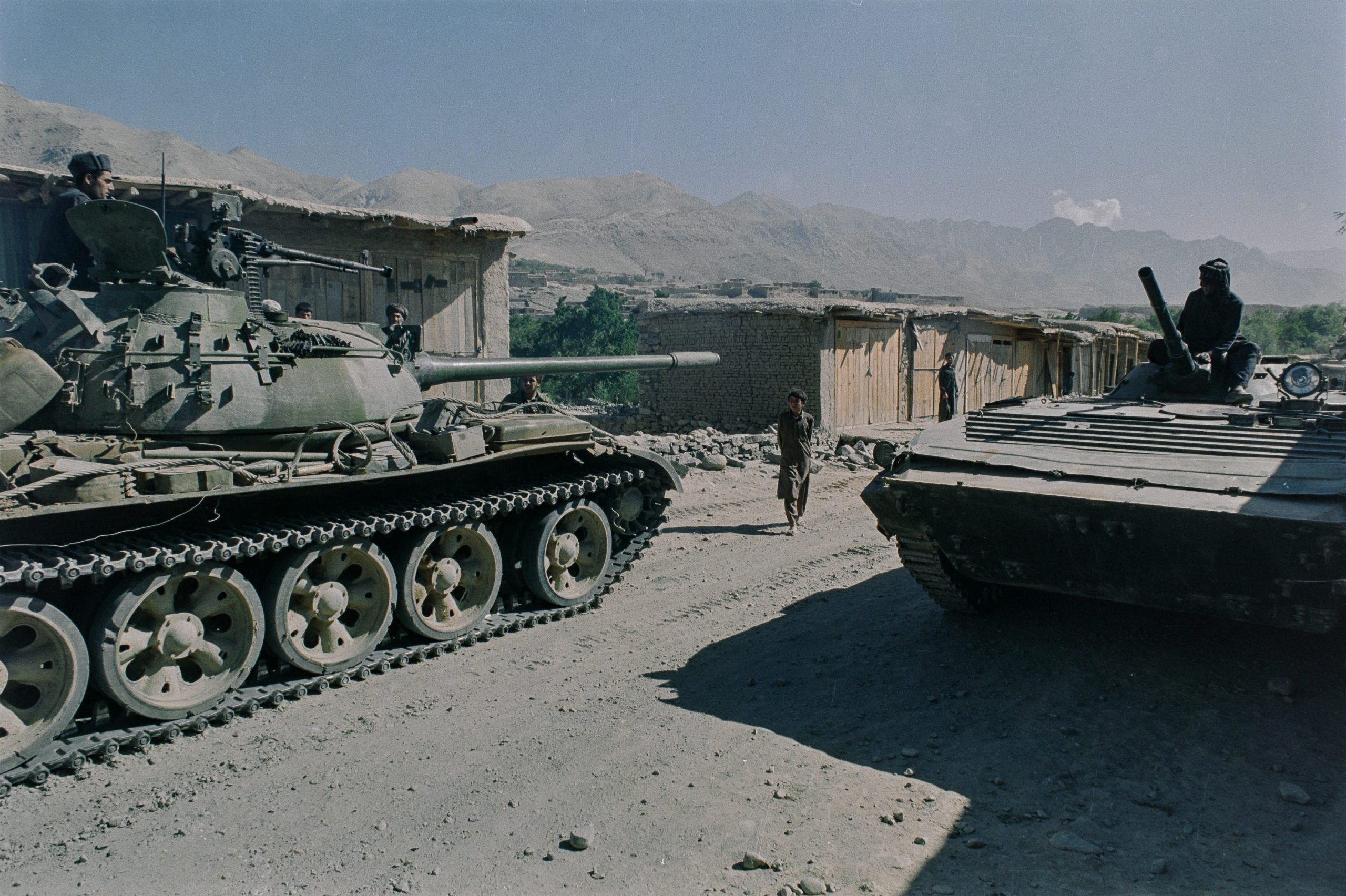
Alan Chin
"By all means, you should do that. You should do your best to be of service to your community," he replied.
"So that will win me some points?" Once again, without quite intending it, I found myself straying into a potentially fraught conversation.
"No. You will still go to hell because you aren't Muslim," he said.
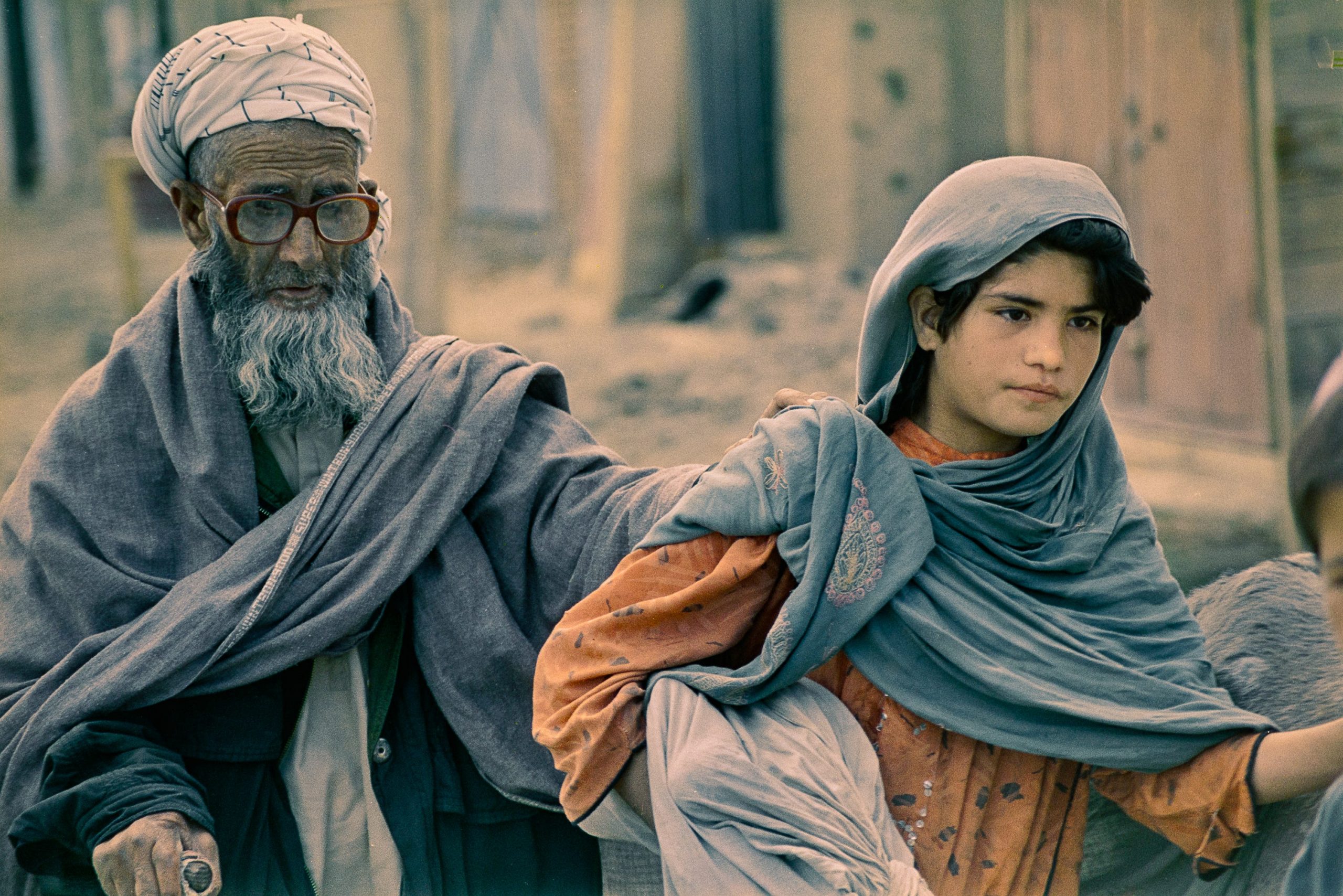
Alan Chin
As we spoke, the crew finished loading the heavy rockets onto the tubes on the back of the truck-borne launcher. Some walkie-talkie conversation ensued out of my earshot, and the officer fired a salvo of rockets by pressing buttons on his controller, which was connected to the weapon by a cable. They roared off to targets miles away.
Once again, that gap in worldview seemed impossible to bridge. What to me were logical fallacies were, at least to these particular Taliban officers, uncontroversial and core truths.
In the village of Sar Chesma a few miles north of Kabul, a father displayed the bloody burqa and shoes of his daughter, who had been killed in a Taliban rocket attack.
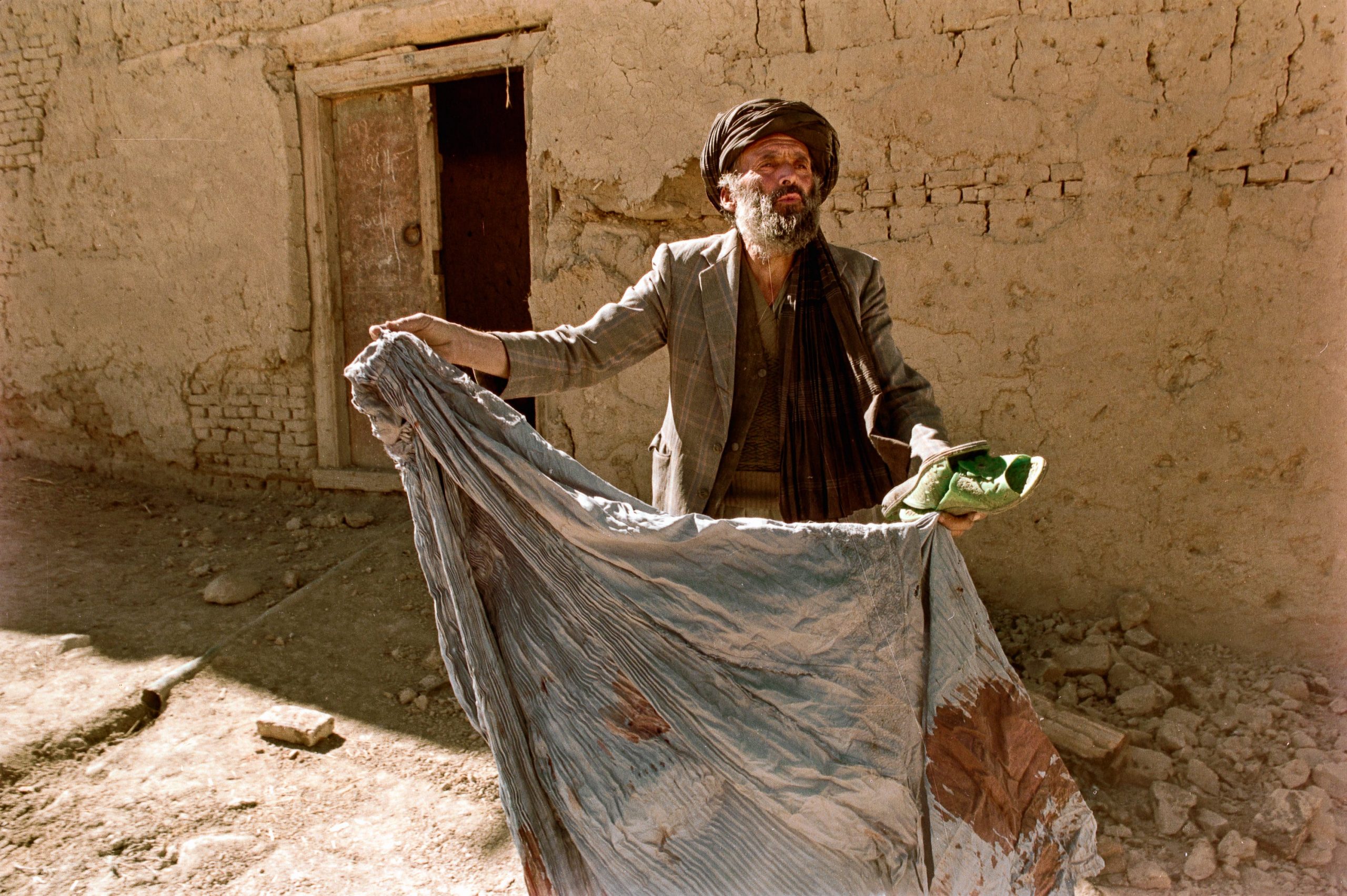
Alan Chin
We were driving near the city of Mazar-i-Sharif when we saw a Cadillac - it was rumored to be the only one in Afghanistan - hurtling south at high speed, flanked by dozens of pickups and larger trucks. It was Abdul Rashid Dostum, a former pro-Soviet general turned warlord, who maintained a fiefdom in this largely ethnically Uzbek area.
We spun around and gave chase, but there was no way the old Toyota Corolla I was riding in could keep up. Hours later, we caught up with them when they stopped at an old Soviet engineers' compound in the fishing town of Khinjan, just north of the Salang Pass in the Hindu Kush mountains.
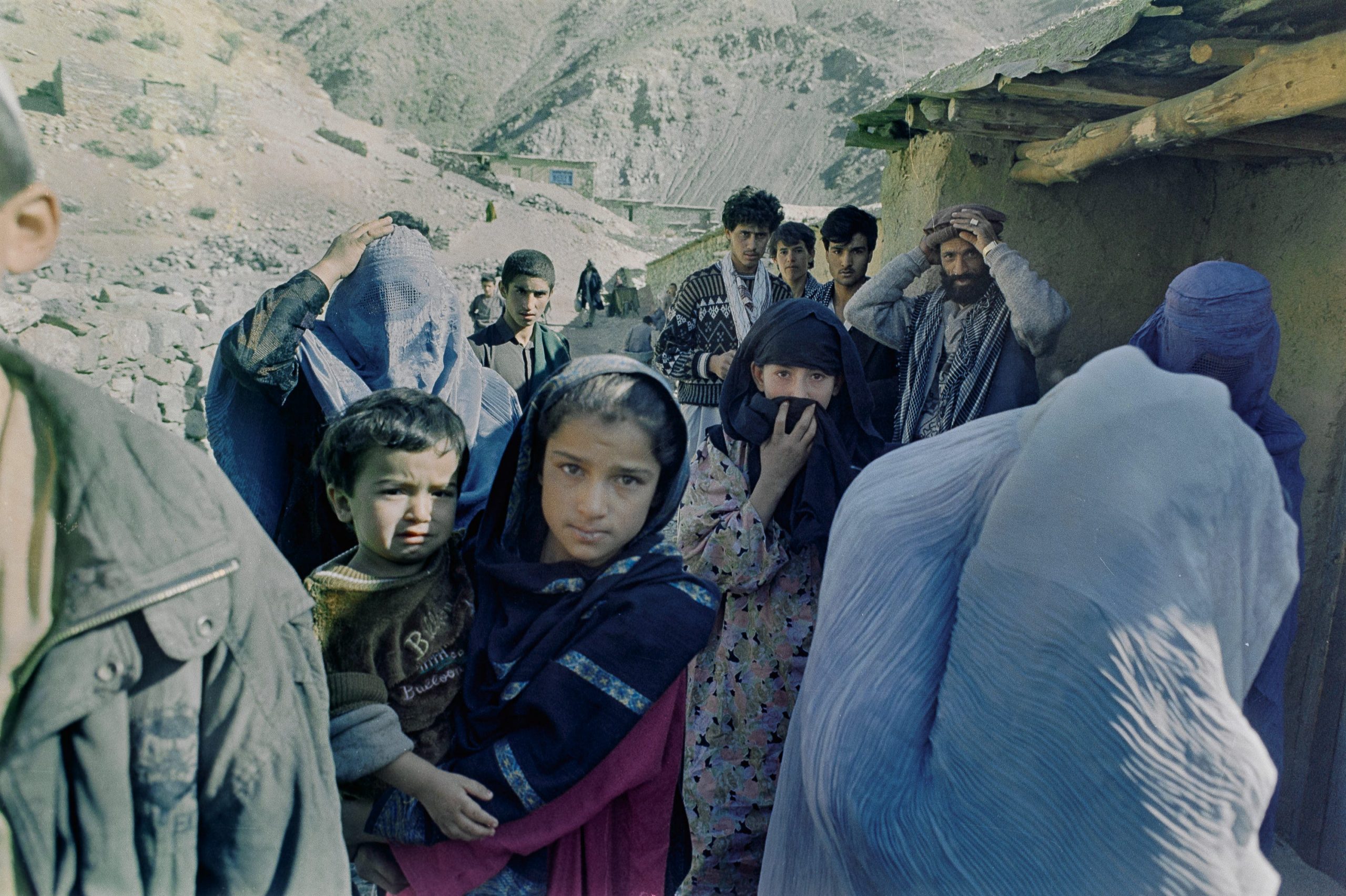
Alan Chin
There, Dostum met Massoud, who arrived by helicopter, and the ethnic Hazara leader Karim Khalili was also present. Their soldiers, formerly sometimes at war with each other, were now mingling while the commanders sequestered themselves. It was getting dark, and there was no electricity. I had to wait outside.
Finally, they were ready, and by the light of a hissing kerosene lantern, I took a few photographs as they signed the agreement that formed the Northern Alliance, or United Front, against the Taliban.
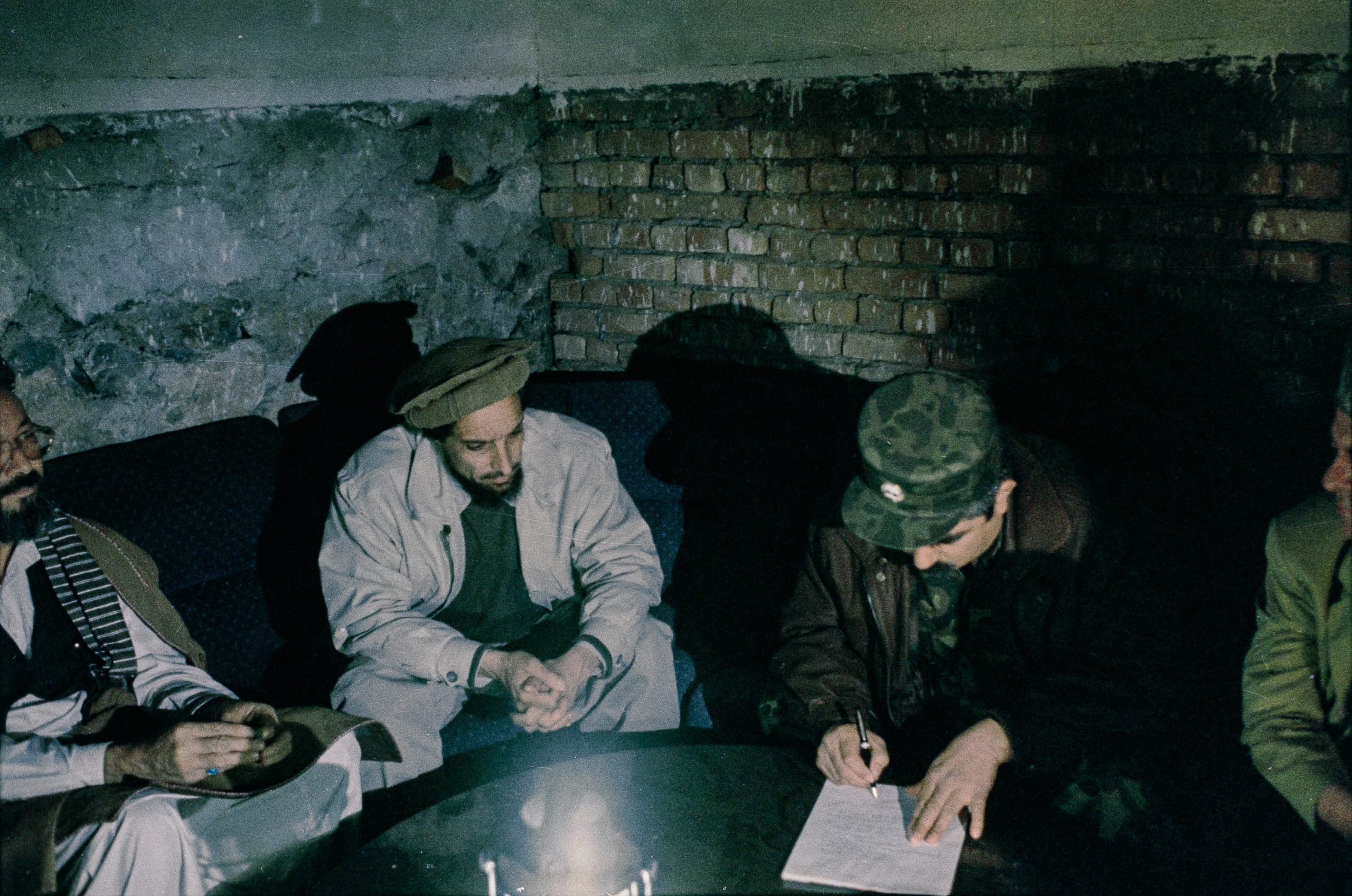
Alan Chin
For five years, with minimal assistance from Iran, Russia, and Tajikistan, they fought on. Massoud traveled to France to try to drum up Western support for his cause. The Taliban meanwhile cemented a terrible reputation with its oppression of women and incidents such as its destruction of the ancient Buddhas of Bamiyan. More quietly, Massoud's representatives were lobbying the US government for aid, with claims - accurate, as it turned out - that their Taliban foes were supporting Osama bin Laden, al-Qaida, and an international network of terrorist extremists.
Two days before September 11, 2001, Massoud was assassinated by Taliban agents masquerading as journalists. The bomb that killed him was disguised inside a video camera. Dostum remained a warlord with a brutal record. A few days ago, he departed Afghanistan for Uzbekistan.
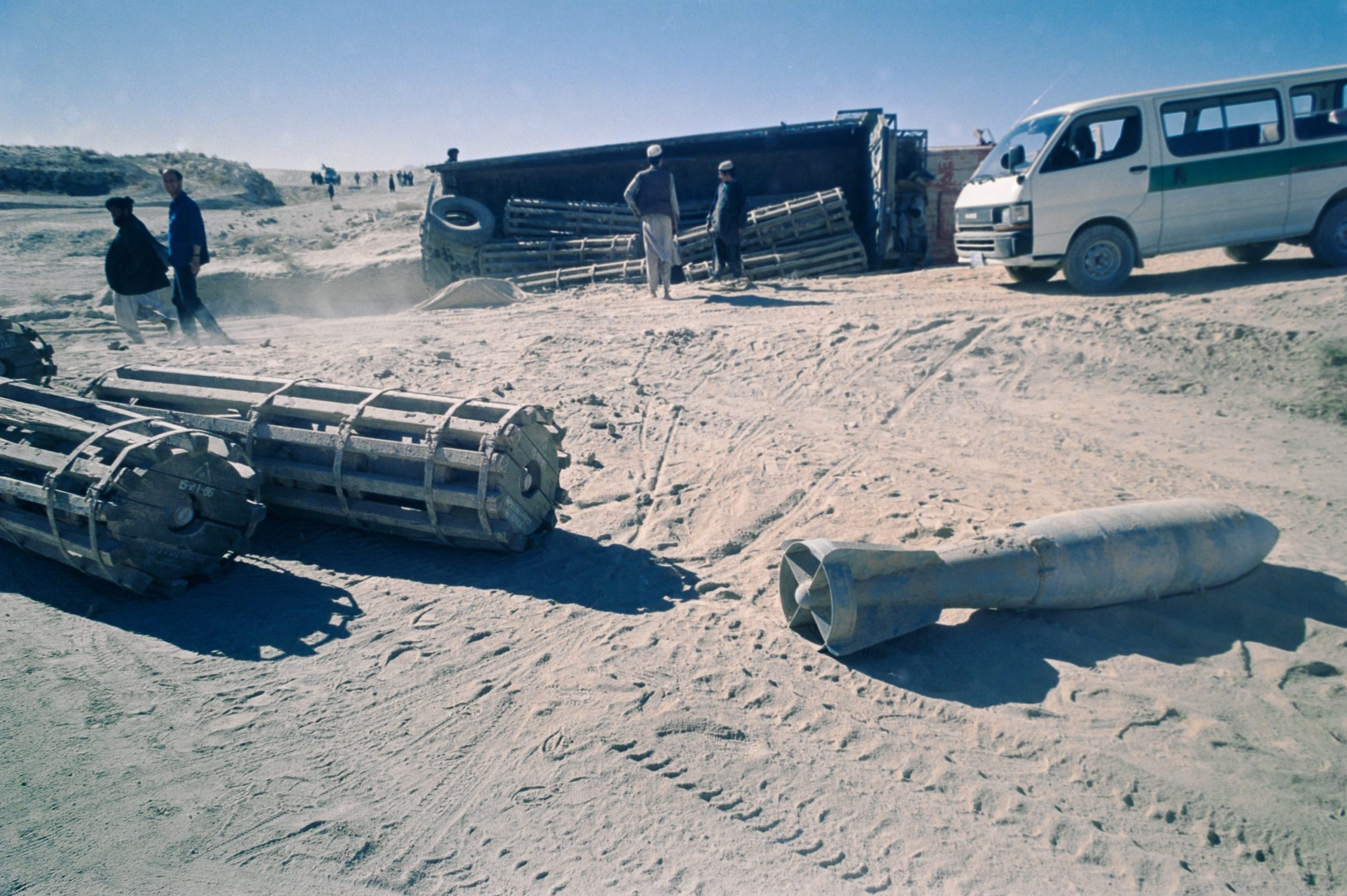
Alan Chin
Traveling to Kandahar, the Taliban's heartland, took two days from Kabul - not the six hours described in the 1970s guidebook we were using to get around. Every bridge along the 300-mile route had been destroyed, forcing all traffic up and down dry riverbeds - made barely passable by local residents, who piled up mud and debris. At one such crossing, an overturned truck lay on its side, its cargo of dozens of enormous aerial bombs scattered across the erstwhile roadway. They were guarded by a 12-year old boy, as the driver had gone to get help.
Once in Kandahar, we wanted to investigate the report of a couple stoned to death for adultery. Witnesses and participants were proud of the death penalty as administered by Islamic clerics - at least, that's what they told foreign journalists. Mohammed Karim, a 24-year-old Taliban soldier, picked up a large stone and threw it, reenacting the executions.
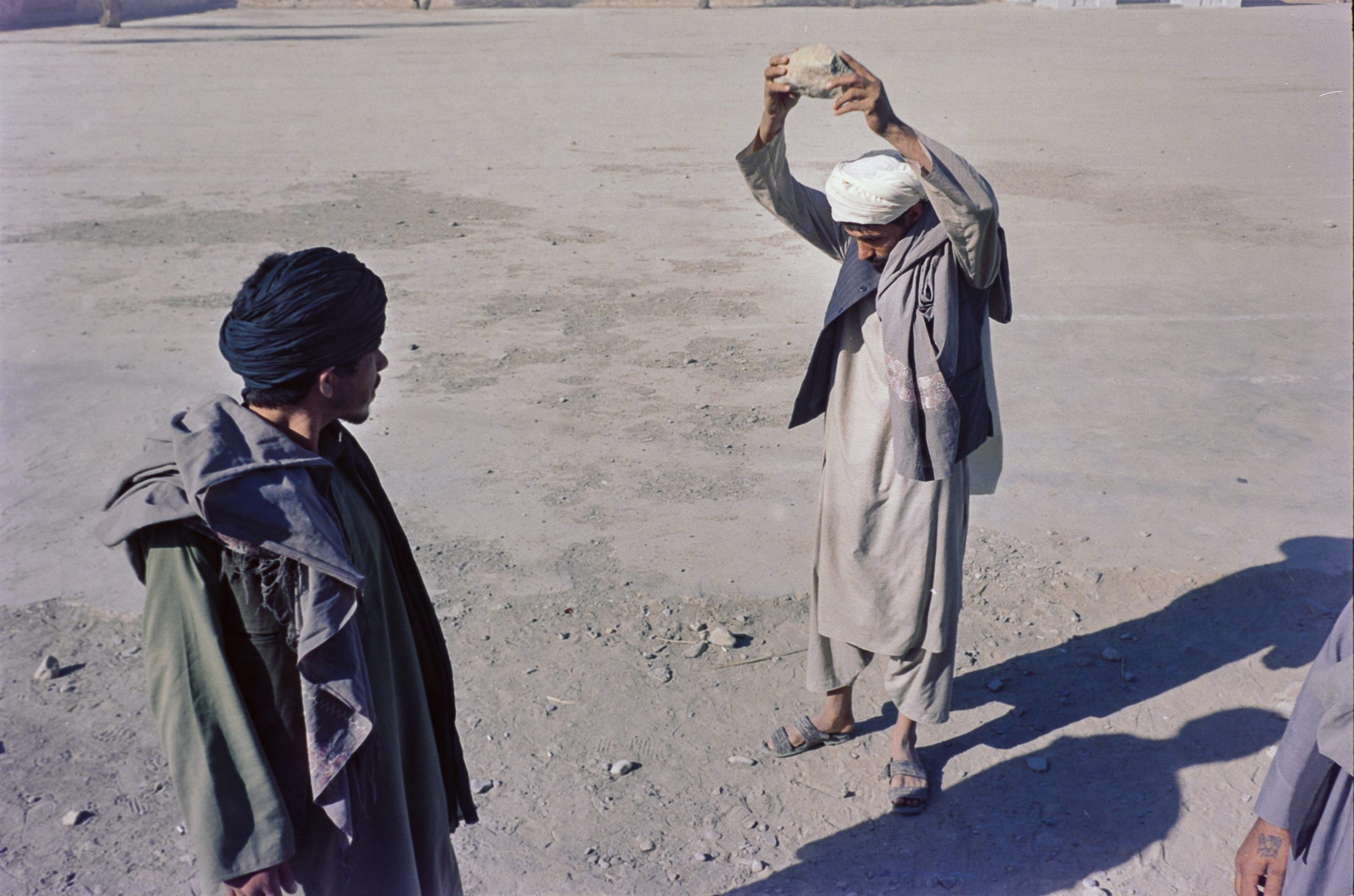
Alan Chin
''No, I didn't feel sorry for them at all,'' the story quoted him as saying. ''I was just happy to see Sharia being implemented.''
Further attempts to speak to the victims' families were stopped by Taliban police, who incited a small crowd to throw rocks at us when we were slow in retreating from the area. We had enjoyed surprisingly good access and freedom to move around up until that point. It was as if they had no idea or didn't care much that the rest of the world (particularly the West) would consider their actions and policies anathema. In truth, perhaps, those attitudes were never as important as imperial considerations of strategy, economics, and raw power.
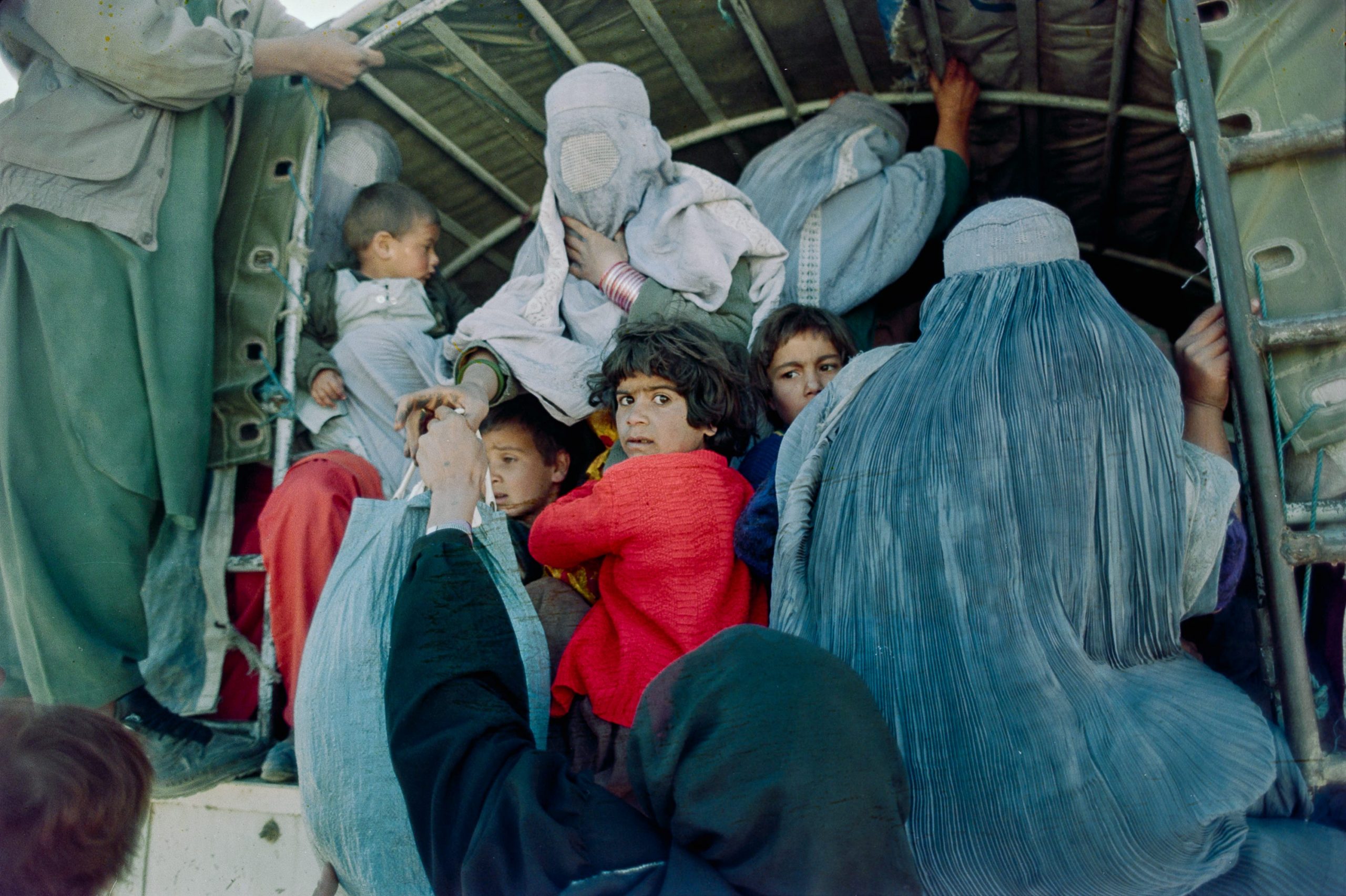
Alan Chin
I returned to Afghanistan to spend weeks with the anti-Taliban Northern Alliance in 2000, and I returned again after 9/11 once the American war began in earnest. I haven't been back since, and I'm far from expert or knowledgeable on any current realities.
But I couldn't help but feel a range of excruciatingly mixed emotions and thoughts as I watched this week's harrowing scenes from Kabul airport, as desperate people clung to the fuselage of an American transport plane before falling to their deaths as it took off.
Like most observers, I didn't imagine that the Afghan government would be a house of cards quite so brittle.
And like a generation of journalists who covered Afghanistan in the years before and after 2001, I'm filled with trepidation as Afghanistan begins its next chapter.
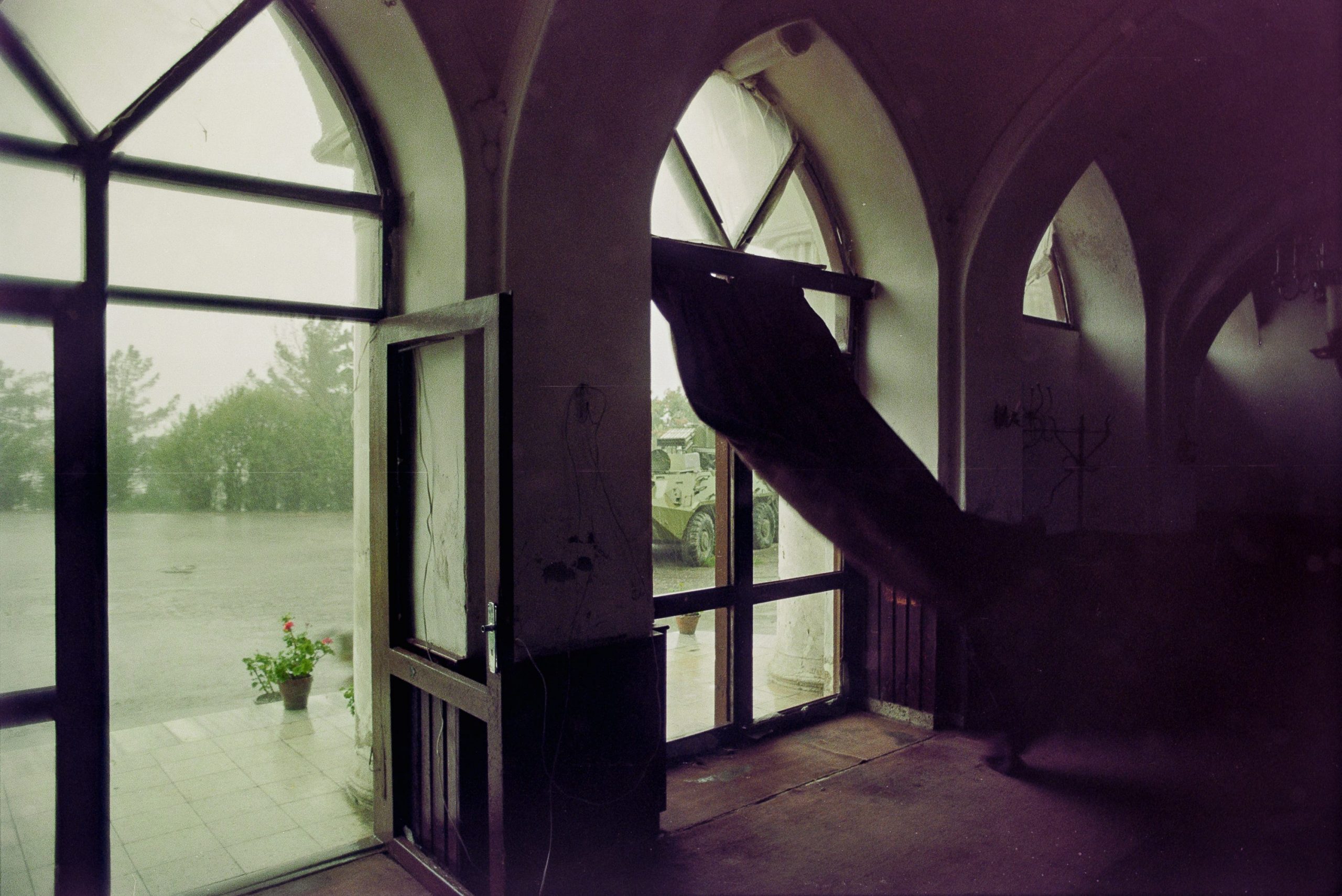
Alan Chin
Dit artikel is oorspronkelijk verschenen op z24.nl
